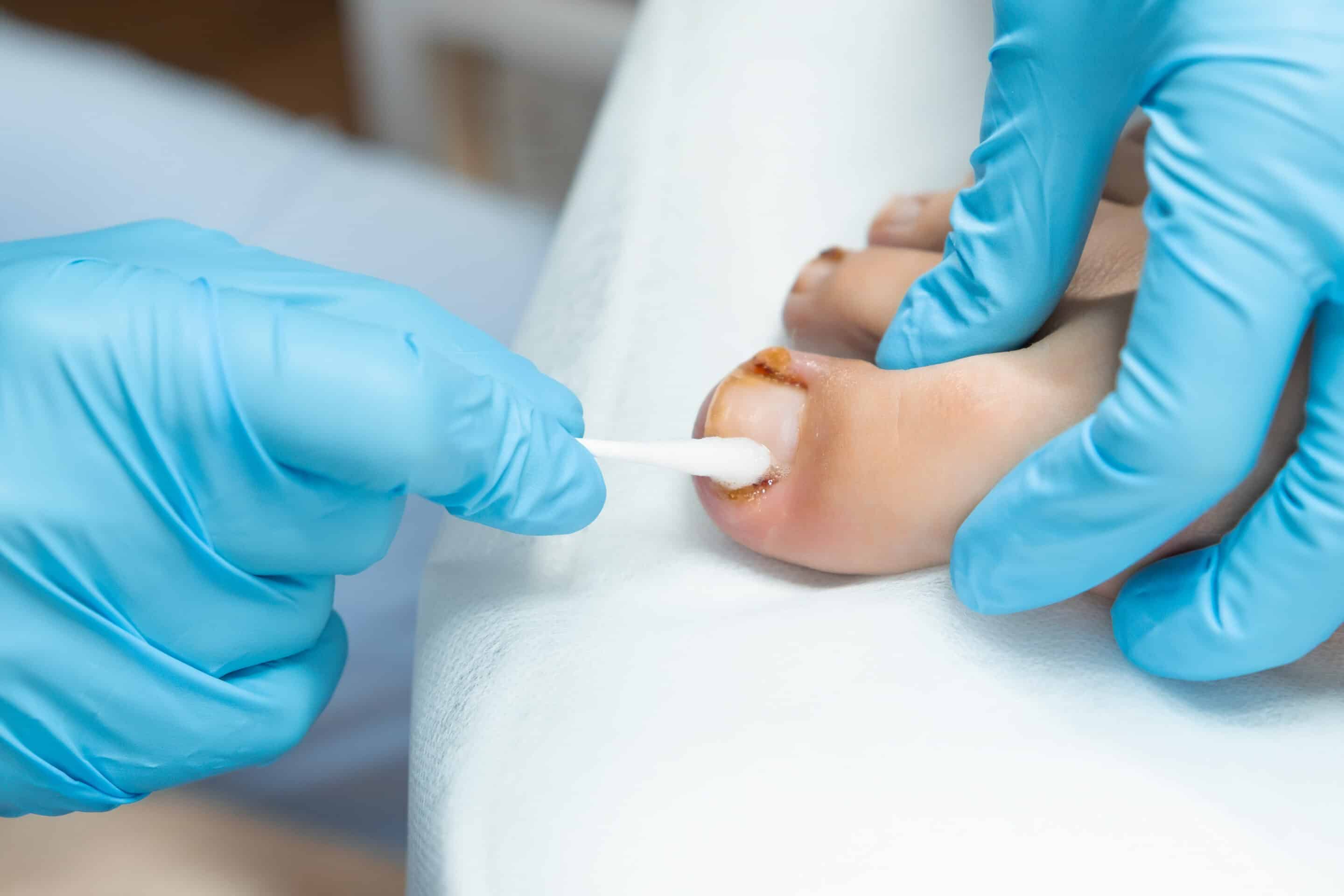What Should I Do About Reoccurring Ingrown Toenails?
An ingrown toenail may start as mild irritation, but it can quickly become painful and even infected if ignored. Simple activities like walking or wearing shoes can turn into daily struggles. Fortunately, effective treatment options are available to relieve pain and prevent the problem from coming back.
At Richardson Podiatry Center, we offer comprehensive care for ingrown toenails, helping patients find fast relief and lasting comfort.
What Is an Ingrown Toenail?
An ingrown toenail develops when the edge or corner of the nail grows into the surrounding skin. It most often affects the big toe and can cause redness, swelling, and tenderness.
Common symptoms include:
- Pain along one or both sides of the nail
- Redness and swelling near the nail edge
- Warmth or drainage (possible sign of infection)
- Difficulty wearing closed-toe shoes
When left untreated, the affected area can become infected, causing even more discomfort and increasing the risk of complications.
Common Causes of Ingrown Toenails
Several factors can lead to an ingrown toenail, including:
- Improper Nail Trimming: Cutting nails too short or rounding the edges can cause the nail to grow into the skin.
- Tight Footwear: Shoes that squeeze the toes or put pressure on the nail edges can make the problem worse.
- Toe Injury: Bumping or stubbing the toe can alter how the nail grows.
- Genetics: Some people naturally have curved or thick nails.
- Poor Foot Hygiene: Keeping feet damp or wearing sweaty socks can soften the skin around the nail, allowing it to grow inward.

At-Home Care for Mild Ingrown Toenails
If your symptoms are mild, you may be able to ease the discomfort with home care. Try these steps:
- Warm Soaks: Soak your foot in warm water for 15–20 minutes several times a day to reduce swelling.
- Lift the Nail Carefully: Place a small piece of clean cotton or dental floss under the nail edge to help it grow above the skin.
- Keep It Clean: Apply an over-the-counter antibiotic ointment and cover with a clean bandage.
- Choose Comfortable Shoes: Wear open-toed or roomy shoes to relieve pressure on the toes.
Avoid digging into the nail or attempting to remove it yourself—this can worsen the problem or cause infection.
When to See a Podiatrist
If your pain doesn’t improve with home care or you notice signs of infection, such as redness, drainage, or swelling, it’s time to see a podiatrist. You should also seek professional treatment if you have diabetes, nerve damage, or poor circulation, as these conditions can slow healing and increase the risk of complications.
At Richardson Podiatry Center, our podiatrist can evaluate your condition and recommend the safest, most effective treatment for your needs.
Professional Ingrown Toenail Treatment Options
Depending on the severity of your ingrown toenail, treatment may include:
- Partial Nail Removal: The ingrown portion of the nail is carefully trimmed away to relieve pressure and allow the area to heal.
- Permanent Nail Procedure: In cases of repeated ingrown nails, the nail root may be treated to prevent regrowth in that area.
- Antibiotic Therapy: If infection is present, antibiotics may be prescribed to clear it up.
- Footwear and Nail Care Guidance: Our podiatrist will provide personalized advice to help prevent recurrence.
Professional care ensures safe, fast relief while minimizing the risk of infection and long-term complications.
How to Prevent Ingrown Toenails
Healthy nail care and proper footwear can make a big difference in preventing ingrown toenails. Here are a few simple tips:
- Trim nails straight across and avoid rounding the corners.
- Keep nails at a moderate length.
- Wear shoes that fit comfortably and don’t squeeze your toes.
- Keep feet clean and dry to prevent infection.
- Inspect your feet regularly, especially if you have diabetes or circulation issues.
These small steps can go a long way toward keeping your feet pain-free and healthy.

Conclusion
An ingrown toenail can be painful, but effective relief is just a step away. Whether you’re dealing with a new ingrown nail or one that keeps coming back, professional treatment can help you heal quickly and prevent future problems.
If you’re experiencing pain, swelling, or signs of infection, contact us at Richardson Podiatry Center for expert ingrown toenail treatment and compassionate care. Our team is here to help you get back on your feet comfortably and confidently.
